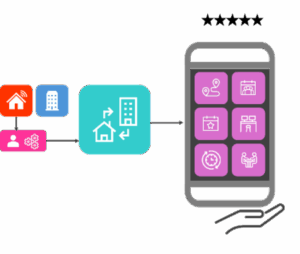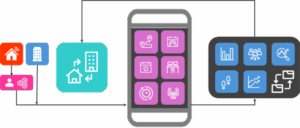With hybrid work now standard, offices and homes coexist within a dynamic ecosystem, each offering distinct advantages. While homes traditionally provide their users with fully customisable environments and complete control over their experience, offices are typically designed around activities rather than personal needs. This tension is driving organisations to rethink employee experience through personalisation, seamless software integration, and reduced friction across digital tools. The goal: creating more efficient, engaging, and ultimately successful workplaces.
Personalised Workplace Experiences
Employee workplace apps have evolved beyond traditional intranets, centralising functions such as room bookings, QR code access, and amenity recommendations. These platforms often use AI to tailor content and services to individual needs, supporting both office-based and remote staff. The greatest benefit of rethinking the office to anticipate the needs of their employees is clear:
Organisations that prioritise employee experience—and make their workplaces inclusive for all—are seeing stronger engagement and improved workplace culture.
Figure 1. Personalised workplace experience supports all needs

Software Integration and Reducing Friction
Advances in workplace software have made integration essential. As modern solutions connect HR, collaboration, and facilities or real estate systems, they are creating unified workflows and reducing manual effort. In many cases, digital workplace platforms now act as a single point of access, breaking down silos and streamlining processes.
This integrated approach fosters collaboration, reduces duplication, and frees employees to focus on meaningful work rather than navigating disconnected systems.
Increasingly, the experience-led workplace, where building management and digital platforms are aligned, is recognised as best practice.
Integrated Data Ecosystems Lead to Better Decisions
The best part? A portfolio of experience-led, frictionless workplaces also doubles as an intelligent, integrated digital ecosystem that enables evidence-based decisions. This includes:
- Actionable insights for workplace design and operations
- Real-time analytics on space use and engagement
- Agility to respond to changing needs
In practical terms, organisations leveraging data and integration are better positioned to support wellbeing, productivity, and innovation.
As such, aligning technology and experience leads to more resilient, attractive, and high-performing workplaces.
Figure 2. From personalisation to better decisions

In summary, the future of employee experience in hybrid environments relies on personalisation, integration, frictionless digital tools, and robust data ecosystems—ensuring organisations remain agile and competitive in 2025 and beyond.

